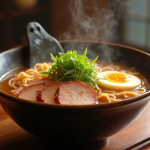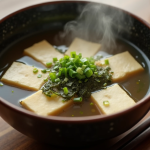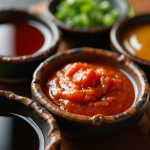So, I’ve been totally sucked into Japanese cooking lately, and let me tell you, the knife you use is a game-changer. It’s not just some random utensil—it’s like your kitchen bestie, making every cut feel like it’s got a purpose. Whether I’m trying to slice fish paper-thin for sashimi or just chopping up some onions for a quick ramen, a good Japanese knife makes me feel like I’m channeling some sushi chef magic. Grab a lousy one, though, and it’s like trying to cut butter with a spoon. Here’s my totally biased spiel on why I’m obsessed with these premium knives and how to pick one that vibes with you.
Why Are These Knives So Freaking Cool?
Japanese knives have this history that’s straight-up wild. They’re made with techniques that go back to samurai sword days—like, actual swordsmith stuff. The blades are so sharp I’m half-scared I’ll slice through my cutting board, and they’re so balanced it’s like they’re doing half the work for me. Unlike those bulky Western knives I used to fumble with, these premium knives use this crazy hard steel that lets the edge get insanely thin. That’s how sushi chefs make those perfect cuts that look like they belong in a museum.
The handles are my favorite part, no joke. Most come with these super light wooden wa-handles that feel like holding a feather. Pair that with a single-bevel blade—the kind you see sushi pros obsessing over—and it’s like the knife’s reading your mind. It just goes exactly where you want it.

The Knives You Gotta Check Out
If you’re thinking about cooking Japanese food at home, here’s my quick rundown on the premium knives you should know:
- Yanagiba: Long, skinny, and born to slice raw fish. Its one-sided edge cuts so clean your sashimi looks like it’s ready for Instagram.
- Deba: A beefy knife for hacking through fish or small bones. It’s like the Hulk of knives—strong but still knows what it’s doing.
- Usuba and Nakiri: Veggie wizards. They’ve got flat edges for chopping straight down. Usuba’s for chefs who wanna flex, but nakiri’s my pick for messing around at home.
- Gyuto: Like a Japanese chef’s knife. It’s my ride-or-die for meat, fish, veggies—pretty much anything.
- Santoku: Smaller than a gyuto, perfect for everyday stuff like slicing chicken or dicing garlic.
Which one’s your match? Depends on what you’re cooking. If you’re dreaming of sushi nights, yanagiba’s the way to go. For regular kitchen adventures, a gyuto or santoku’s got you covered.
Finding Your Knife
Picking premium knives is like choosing your favorite coffee order—it’s gotta be you. Are you always prepping fish? Do you live for slicing veggies into perfect little matchsticks? Think about what you’re cooking most. Also, these knives are all about push-cutting—slicing forward in one smooth swoop. I used to rock my knife back and forth like I was on a cooking show, and let me tell you, switching to push-cutting was like learning to ride a bike again. Worth it, though.
Blade shape’s a big deal. Long, thin ones are awesome for slicing, while wider blades are more flexible. Handles? Wa-handles are light and feel amazing, but you gotta baby them a bit. Western handles are chunkier and less fussy if you’re new to premium knives.
The edge thing’s worth mentioning too. Single-bevel knives like yanagiba are next-level precise but kind of a headache to get the hang of—oh, and most are for righties. Double-bevel blades are way easier for us regular folks.
When you’re shopping, whether it’s online or at some bougie kitchen store, look at the steel and craftsmanship. Hand-forged premium knives are usually the good stuff—brands like Masamoto, Yoshihiro, or Shun are my faves. A great knife makes cooking feel like less of a slog and more like a vibe.
What Makes Premium Knives So Special?
It’s all about the steel, for real. High-carbon steel, sometimes with those hypnotizing Damascus swirls, stays sharp forever and looks like it belongs in a gallery. Premium knives don’t need constant sharpening, and they feel so right in your hand, even when you’re chopping for ages.
The tiny details are what get me. A hammered blade or a super smooth finish shows someone poured their soul into it. A handle that’s snug against the blade means it’s built to last. These premium knives aren’t just churned out—they’re legit crafted.
One heads-up: don’t get suckered by fakes. If a knife’s cheaper than a pizza, it’s probably junk. Look for real wood handles, steel with some character, or a little maker’s mark to know you’re getting the real deal.
Keeping Your Knife in Check

Premium knives are like that friend who’s awesome but needs a little extra TLC. Here’s how I keep mine happy:
- Wash it by hand. Dishwasher? Absolute crime.
- Dry it right after, or you’ll be dealing with rust, especially with high-carbon steel.
- Store it somewhere safe—I’m a team wooden sheath, but a knife rack’s cool too.
- Sharpen it with a stone. Those pull-through sharpeners are basically knife poison.
Learning to sharpen your knife is low-key therapeutic. It’s like giving your blade a high-five, and it makes your cuts so much cleaner. Plus, it’s kinda dope to know you’re taking care of your gear.
The Knife for Sushi Vibes
If you’re trying to make sushi at home, your knife’s the star of the show. A yanagiba moves—its single-bevel blade slices fish in one clean glide, keeping it perfect for sashimi or nigiri. Don’t saw at the fish; just let the blade do its thing like it’s skating. Also, I figured out if you chill the fish a bit and wet the blade, it doesn’t stick—total game-changer. Little hacks like that make your sushi look like you’ve been doing this forever.
You don’t need a whole squad of premium knives. One solid blade that fits your style is enough to get you rolling.
Wrapping It Up
Japanese cooking is all about keeping things fresh and clean, and premium knives are what make it click. Getting a nice one isn’t just about better food—it’s about feeling like you’re part of some ancient culinary tradition, even if you’re just making dinner on a Tuesday. Whether you’re slicing fish, chopping veggies, or just vibing in the kitchen, a good knife makes it fun. Treat it like family, and it’ll stick with you for life.





